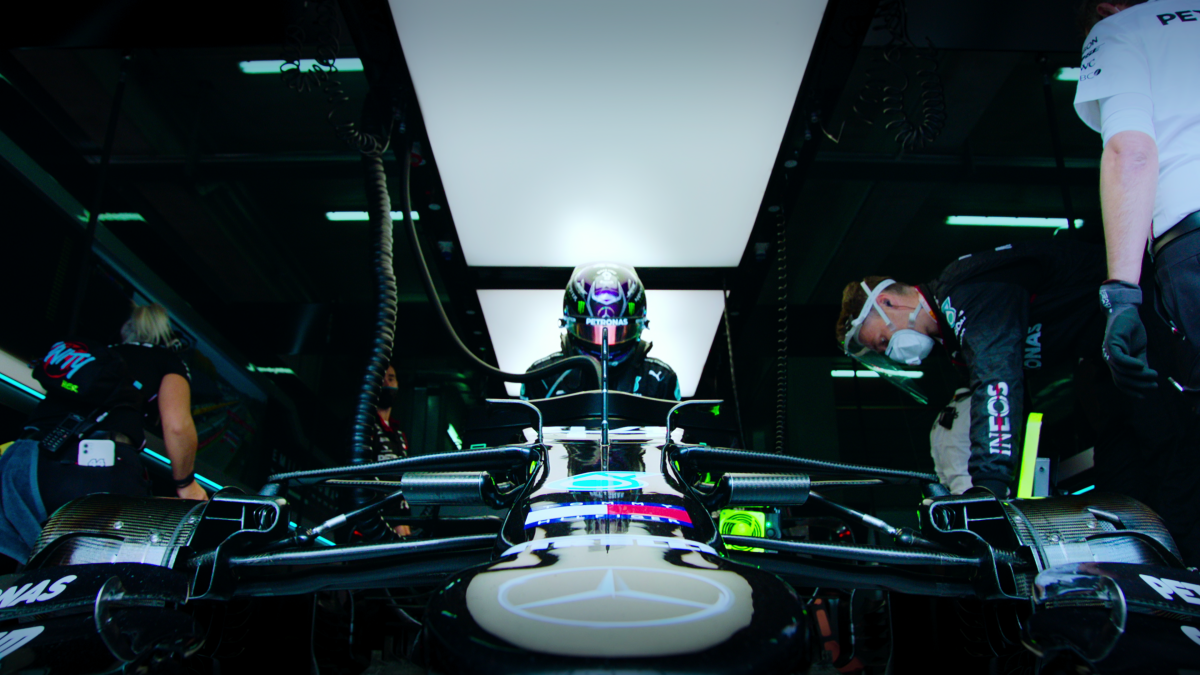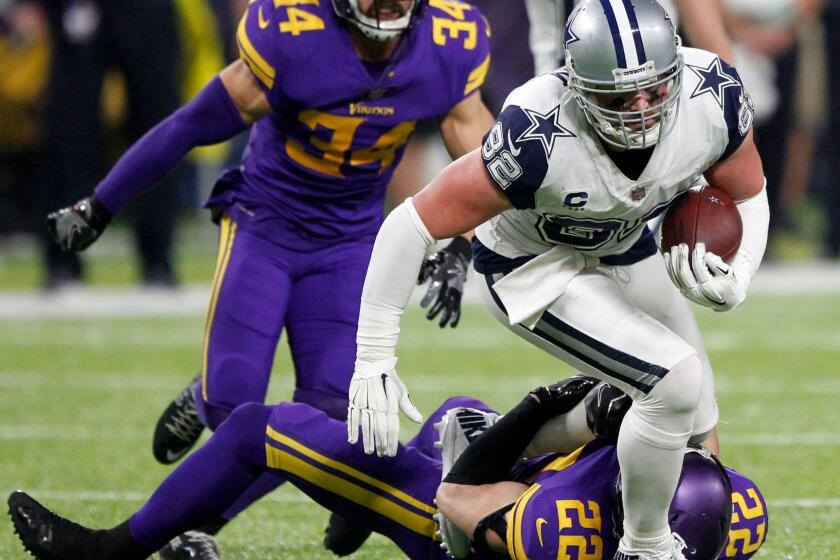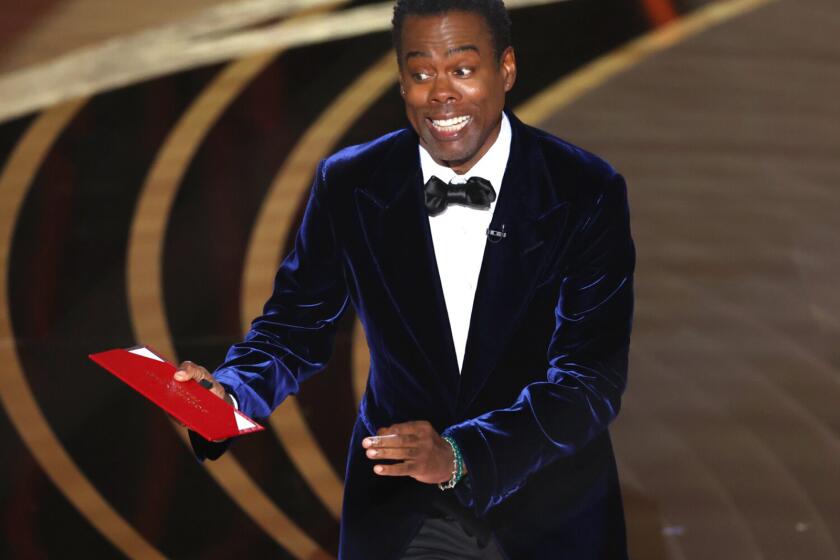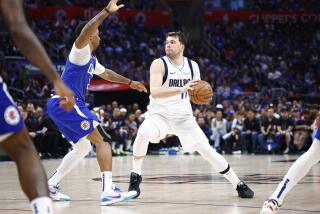Netflix is getting into live sports with Formula 1, but is it just a publicity stunt?

- Share via
As Netflix built its giant library of content over the years, it invested heavily in original TV dramas, reality shows, big-budget movies and mobile games.
Missing from its plans, however, was always live sports, long one of the biggest draws in television.
It’s an area in which Netflix’s competitors — Google’s YouTube, Amazon‘s Prime Video and Apple TV+ — have spent billions of dollars to secure the rights to stream games. But Netflix has kept out of live sports, a hugely expensive and technically challenging enterprise.
Now there are signs that Netflix is finding ways to tap into the sports audience with live events, albeit by taking baby steps into this final frontier.
Netflix is in talks to develop its first live sports event, according to people familiar with the matter who were not authorized to comment.
The company is exploring a celebrity golf match in Las Vegas that would include Formula One drivers and professional golfers featured in Netflix sports documentary series “Drive to Survive” and “Full Swing.” Netflix and Vox Media, one of the companies behind “Full Swing,” declined to comment.
The plans were first reported by the Wall Street Journal, which cited anonymous sources. Netflix also reportedly has considered acquiring the rights to sports broadcasts and investing in smaller leagues.
The website where you can order diapers and groceries and watch critically acclaimed TV series like “Transparent” now wants to be the place you can turn to for live sports.
The discussions could be a sign that Netflix is testing the waters on consumer demand and whether its technology can support more live sporting events, analysts said.
“They’re dipping their toe in an inexpensive way,” said Michael Pachter, a managing director of equity research at Wedbush Securities.
Live sports could have benefits for Netflix.
It could, for example, help draw viewers to the nascent ad-supported streaming plan the company launched in November. Advertisers like live sports because it captures viewers’ attention on an appointed day and date, which has made it one of the last things holding the traditional pay-TV bundle together. Such programming has value to marketers looking to reach consumers within a specific time frame.
Such an event could allow Netflix to test whether its technology can handle a livestream with hundreds of thousands or even millions of simultaneous users whom a significant sports property could attract. The company has been experimenting with livestreaming, starting with its foray earlier this year with a comedy special starring Chris Rock.
“This could be a precursor for them getting more aggressive [in live sports],” said Jeff Wlodarczak, principal and senior analyst at Pivotal Research Group.
Live events also could help draw attention to Netflix’s existing efforts to appeal to sports fans.
So far, Netflix has delved into sports with popular docuseries such as “Formula 1: Drive to Survive,” taking viewers behind the scenes with professional race car drivers; “Cheer,” which follows college cheer squads; and “Last Chance U,” featuring collegiate athletes. Netflix also co-produced the hit Michael Jordan miniseries “The Last Dance” with ESPN.
Since the ESPN/Netflix co-production became a cultural phenomenon, the flood of sports docs has intensified — making it ever harder to break through.
These programs have attracted significant audiences, even among non-sports fans.
The viewership of “Formula 1: Drive to Survive” has grown rapidly. The series garnered 569,884 viewers in the first week of Season 5, compared to 407,678 viewers during the first week of Season 4, according to Nielsen data.
And a celebrity golf tournament would serve as a vehicle to promote Netflix’s existing Formula One show and enhance its relationship with the racing league.
“Drive to Survive,” which has five seasons available on Netflix and is filming its sixth, helped raise the profile of Formula One in the U.S.
Jon Christian, executive vice president of digital supply chain for media and entertainment consulting company Qvest U.S., said the show made him a fan of the sport itself.
Prior to watching “Formula 1: Drive to Survive,” Christian had never been to a Formula One race, but he now spends “ridiculous prices” to go see the action live in Miami.
“I didn’t know anything about F1,” Christian said. “They got me into that because they created a relationship of the drivers with me. It was because of Netflix that I now actually watch it live.”
Netflix has more sports documentary series in the pipeline.
The company launched “Unchained: Tour de France” this month. It recently announced its first deal with the NFL on an upcoming series called “Quarterback,” which will present a behind-the-scenes look at players including Patrick Mahomes of the Kansas City Chiefs.
Such shows help draw sports fans without getting into expensive bidding wars for rights fees for live coverage. Netflix pursued the media rights to Formula One last year, but they went to ESPN for $75 million to $90 million a year through 2025, according to Sports Business Journal.
Netflix co-CEO Ted Sarandos articulated the cautious approach in an earnings presentation in January.
“We’re not anti-sports, we’re pro-profits,” Sarandos said. “We’ve not been able to figure out how to deliver profits in renting big league sports in our subscription model. Not to say that won’t change. We’ll be open to it, but that’s where it is today.”
The conservative view may be driven in part by economic necessity.
Netflix, which had long-term debt of $14 billion in the first quarter of 2023 and is under pressure from Wall Street to increase profits, says it plans to keep its content spending to about $17 billion annually on average from the 2022 to 2024 period — in contrast to the rapid rise in the industry’s spending before the streaming correction.
Venturing into live sports, which requires heavy investment not only in licensing fees but also production and commentators, would not help with the cost-controlling effort.
Also, the company is not in position to play in the same free-spending arena as Amazon and Apple, which both have more latitude because streaming entertainment is not their primary business.
Amazon took on the NFL’s “Thursday Night Football” exclusively in the league’s current media rights contract as the NFL’s broadcast partners Fox, NBC and CBS passed. Each TV network lost hundreds of millions of dollars on the package in recent years.
Apple TV+ acquired the rights for Major League Soccer after the sport’s last media partners, ESPN and Fox, passed on a new deal.
Both tech behemoths wanted live sports to jump-start their video streaming services, which are meant to support their other businesses.
“If you’re Amazon, you’re in sports ultimately to not only create a successful programming service but to help drive the overall business,” said Lee Berke, president of LHB Sports, Entertainment & Media. “That’s getting more Prime subscribers who buy more products and more goods and services and all the things that drive in Amazon’s bottom line.”
The same thinking applies to Apple, where the main business is driving the sales of iPhones, iPads, watches, VR goggles and other hardware, Berke said.
Both are expected to be contenders for the next NBA media rights deal — now held by Disney’s ESPN and Warner Bros. Discovery’s Turner networks.
There’s no indication that Netflix will be playing in that game yet. The company’s sole business is creating and distributing content, making it more vigilant about getting a return on investment from everything it buys.
“It’s a huge business, but they’ve got to control cost,” Berke said.
Comedian Chris Rock will be the first artist to perform a live special on Netflix, which some analysts say could help create more appointment-based TV on streaming.
Netflix also wants properties it can own and make money on throughout the world. Sports rights are essentially a rental.
The proposed celebrity golf match, on the other hand, would be a low-risk route for refining the company’s ability to provide live events, which can be challenging for streaming services.
Millions of viewers tuned in to Netflix on Sunday night, ready to watch the ‘Love Is Blind’ live Season 4 reunion, only to find that it was delayed and then scrapped for a taped special instead.
Additionally, the company is learning to deal with the technological difficulties surrounding livestreaming.
In April, Netflix bungled its second live event, the Season 4 reunion show for reality dating series “Love Is Blind.” Netflix blamed a bug for the show going awry, causing significant delays. Netflix Co-CEO Greg Peters apologized for disappointing so many people.
The program did not get posted on Netflix until the day after the event. Still, the demand was clear — Netflix said 6.5 million viewers watched the program.
That kind of technical snafu may be a survivable problem with a reality TV reunion. But every athlete knows that when it comes to the big game, there are no do-overs.
More to Read
Inside the business of entertainment
The Wide Shot brings you news, analysis and insights on everything from streaming wars to production — and what it all means for the future.
You may occasionally receive promotional content from the Los Angeles Times.
















